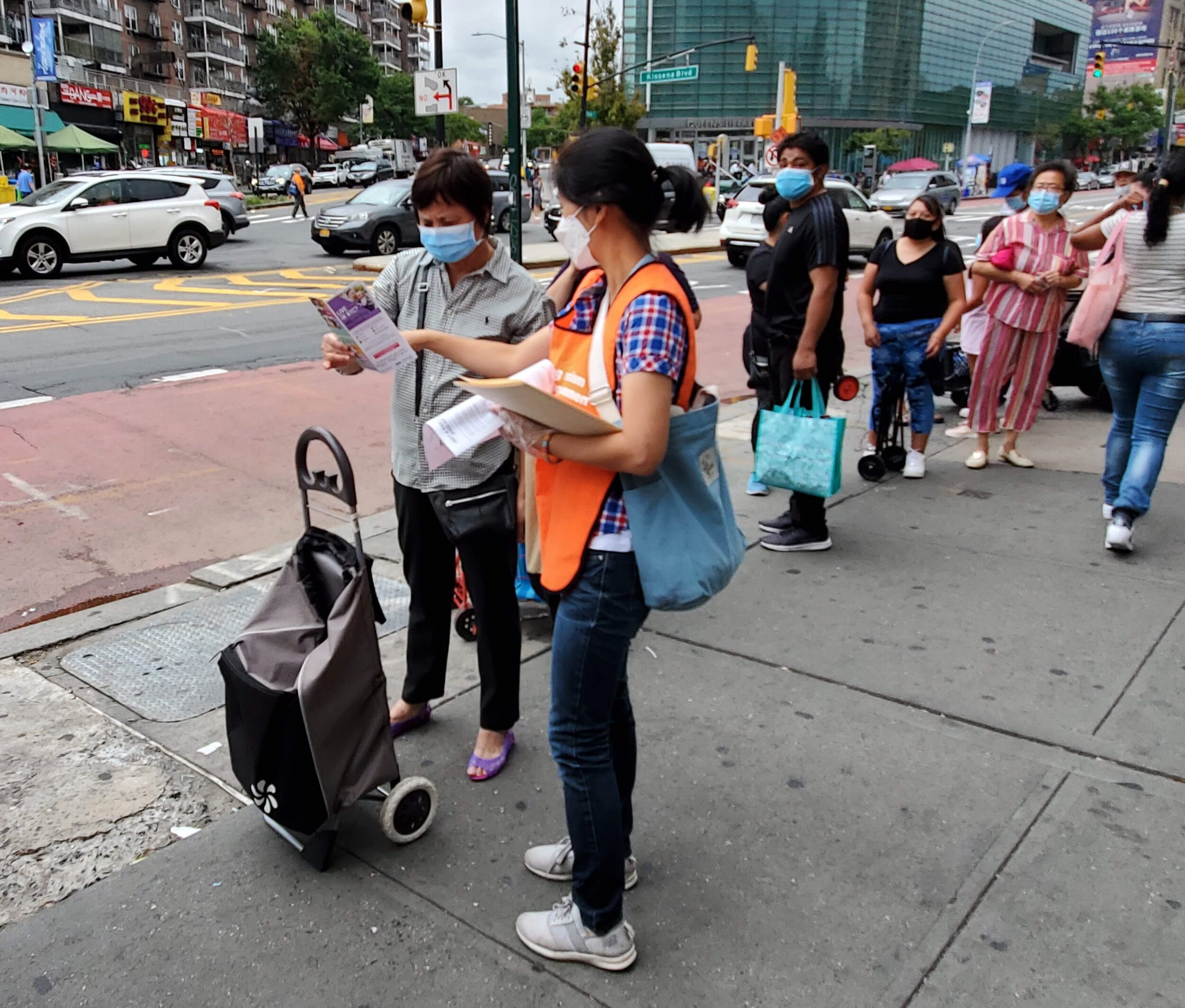Queens community groups make connections through Census count
/The YWCA Census team hit the streets to explain the importance of the Census to the Flushing community. Photo courtesy of YWCA
By Angelica Crisostomo
New York may have lost a Congressional seat following the tallying of the 2020 Census, but the community groups in Queens who were faced with the daunting task of getting historically underrepresented communities counted say they gained something in the process.
While the results were unfortunate the organizations went all out to ensure those who are typically overlooked were seen, they said. In the end, connections with the community were made that will outlast the Census counting processes.
The Queens Community House got an early start and began its Census work in 2019, long before the complications of a pandemic would force them to adapt. Its Meals on Wheels and food pantry programs evolved to fulfill two responsibilities; providing food to communities in need and utilizing modern technology through a partnership with the Census Bureau to encourage people to self-respond to the nationwide count.
“[Between 20 and 40] people a week were filling out the Census as they waited on line for the pantry,” said Anna Moyano, the Director of Community Building at QCH.
But while the pandemic complicated the counting process, it wasn’t the only source of friction.
The YWCA of Queens and Sunnyside Community Services, which both serve historically undercounted areas, entered the Census season anticipating general mistrust of the government, a lack of digital literacy and language barriers.
The two organizations were both tasked by the state to aid in the Census efforts through New York’s Complete Count grants.
“We made it a point to be able to hire Census organizers or volunteers that [looked like] and spoke the language of the community that we were serving, so that there was an ease in terms of being able to communicate,” said Liceth Turo-Garcia, the director of Business Operations at the YWCA.
The YWCA visited ESL and immigrant communities with multilingual teams to explain the importance of the Census. Photo courtesy of YWCA
Johan Lopez, the director of Adult and Immigrant Services at Sunnyside Community Services, noted that his organization was “able to hire a team of six to form our Census engagement team, and each was armed with a tablet [to engage with] those with limited access to technology.”
The digital initiatives replaced the original Census strategies that community organizations developed, which more heavily focused on in-person events and forums. Through these efforts, connections were made, both related to the Census and otherwise.
“Our team called our [Sunnyside Community Services program participants] to, of course, encourage them to self-respond to the Census,” Lopez said. “But what the team shared with me was that many times, community members just wanted to talk to someone, and talk about the trauma that they were experiencing in their neighborhoods. Losing family members and neighbors. In a way, our team became counselors.”
Vicky Kan, the Census manager of the YWCA, observed an influx of camaraderie as she tabled for the YWCA’s Census outreach work.
“Some people passed by and they would ask, ‘Can I join you?’ Kan said. “Most of our volunteers, actually, have been recruited from the street.”
MinKwon’s Civic Participation Manager Sandra Choi explained similar sentiments regarding the overall experience of 2020 Census outreach –– the Flushing organization had a large group of youth volunteers.
According to Choi, there was an air of shared responsibility in ensuring the community was being accounted for. The group coupled their existing mutual aid programs with their Census counting efforts.
And while making connections with their neighbors will still remain a priority, the goal again will shift in the coming year.
Next on the list: redistricting.
“We see redistricting just as important as the Census work, because we need to make sure that communities of interest are preserved and that we can collectively advocate on the issues that are important to our community,” Choi said. “We really want to make sure our community members, many who are working class, first or second generation immigrants, understand the important role they play in shaping the political boundaries that are going to be mapping out in New York City.”





